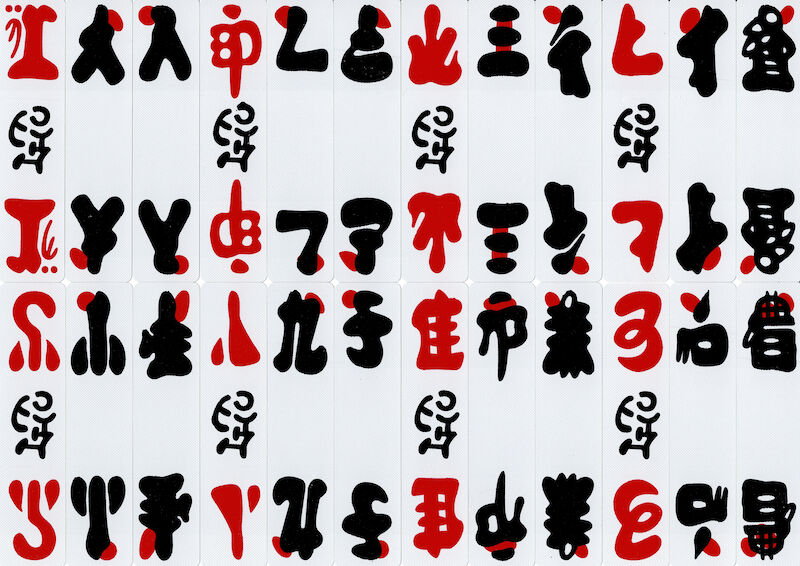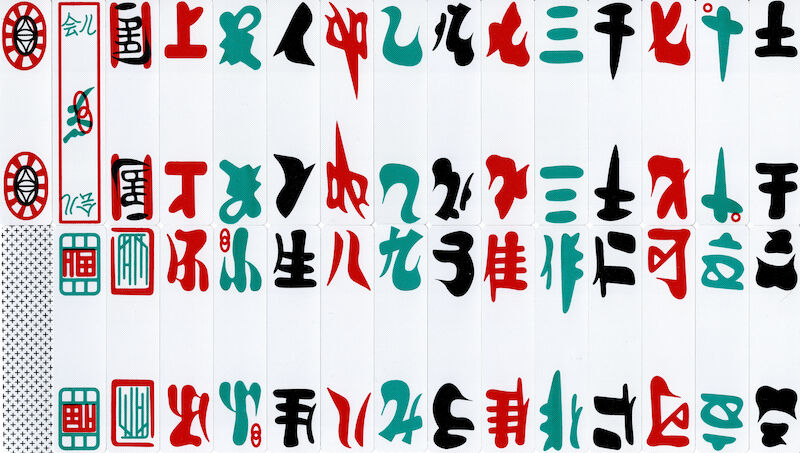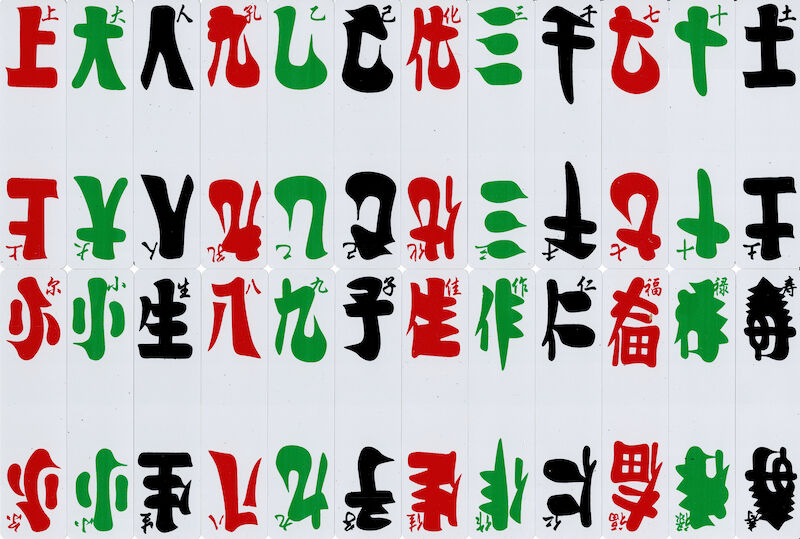上大人牌 · Shàng Dà Rén Cards
Last updated: .
Shàng Dà Rén Cards (上大人牌) are a type of Chinese playing card. The deck is constructed from a set of 24 cards, each one bearing a character from a traditional Chinese text that was used to practice calligraphy. A full deck contains multiple copies of each card; usually four, giving 96 cards total.
The standard version of the text can be interpreted loosely as:A (p. 272)
上大人
孔乙己
化三千
七十士
尔小生
八九子
佳作仁
可知禮
His Greatness
Confucius
has taught three thousand students
of which seventy became virtuous scholars.
A young student like you
should study from eight or nine sages
should learn how to be benevolent
and hence understand courtesy and manners.
In most versions of the cards, the first of each set of three characters is highlighted in red. In some versions, the second character is highlighted in green.

A 96-card deck published under the brand 上大人乐喜.
© George Pollard, 🅭🅯🄏🄎

A 145-card deck published under the brand 上大人乐喜. There are 5 extra cards and 5 copies of each card. (The seller advertised this as a 144-card deck.)
© George Pollard, 🅭🅯🄏🄎
Fú Lù Shòu Pái 福祿壽牌
This is a variant of the Shàng DàRén cards where the final three characters are replaced by the characters 福祿壽 (‘fortune, prosperity, longevity’).

A 96-card Fú Lù Shòu deck published under the brand name “Shashi” 沙石. These cards have indices so the values can be read while fanned.
© George Pollard, 🅭🅯🄏🄎
References
Steinmüller, Hans (). ‘The Moving Boundaries of Social Heat: Gambling in Rural China’. The Journal of the Royal Anthropological Institute vol. 17 (2), : pages 263–280.